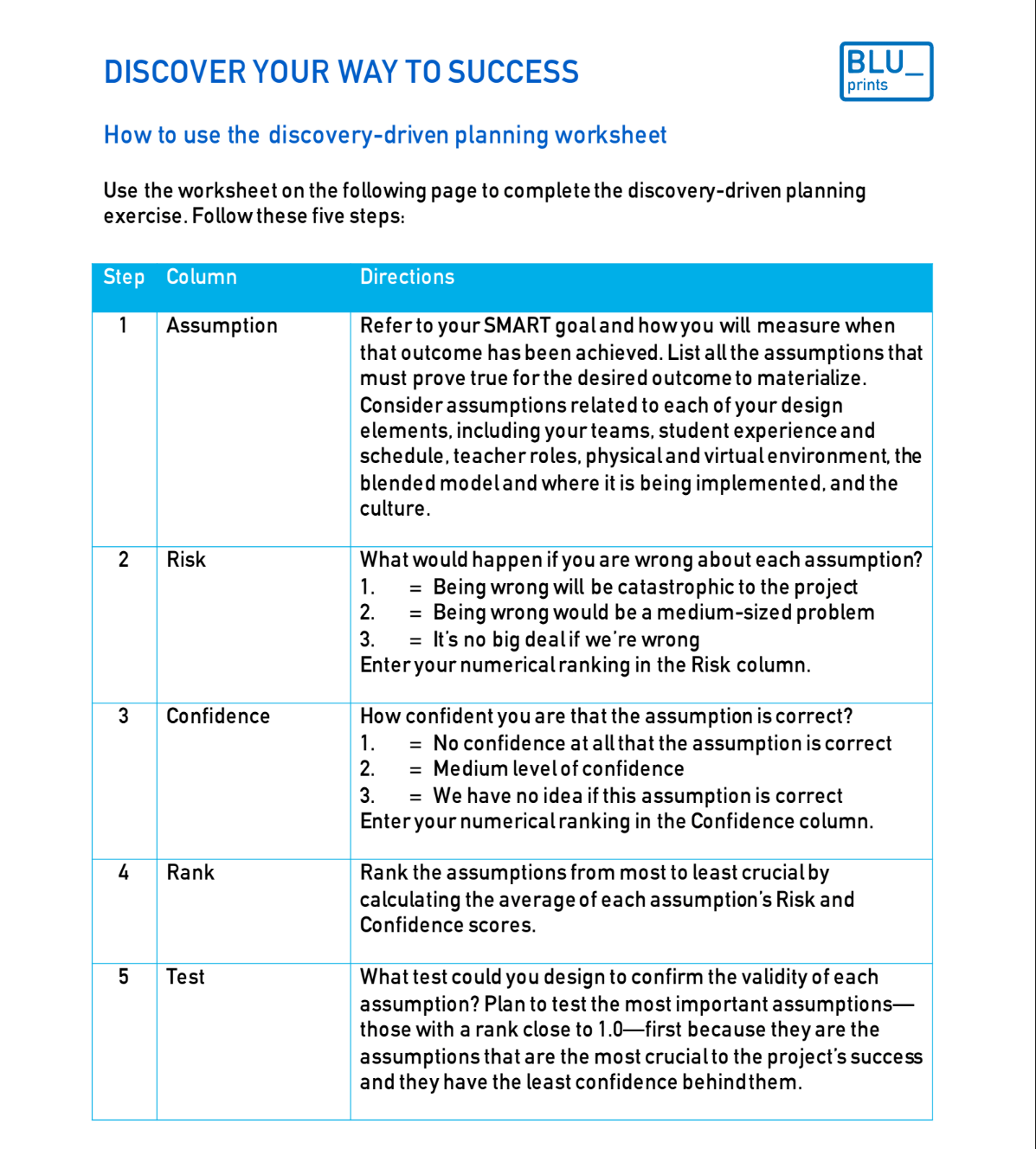Refine & Iterate
Building a blended learning program is a process, not an event.

How to discover your way to success
1
Bring a diverse group together and consider what assumptions you are making when going blended.
At their outset, blended learning programs can carry many assumptions, some of which may not prove viable. Assumptions may be “the devices will work” or “teachers will be on board” or “students will enjoy self-directed time”, and so forth. Have people at the table in this brainstorming exercise who represent a variety of departments and perspectives, so that the assumptions will be exhaustive.
2
Make an exhaustive assumptions list, and rank them in order of how important they are to student success.
Then rank them in order of how confident you are the assumptions are true. Everybody should know what the outcomes must look like for the innovation to be worthwhile.
3
Start by testing assumptions that are most important to student success and that you are least confident are true.
Then work your way towards assumptions that are least critical to student success and which you are most confident are true. Keep tests simple and cheap, like talking to experts, visiting schools or doing a small, after-school pilot.
4
Determine if the assumptions are holding true at predetermined checkpoints.
If they are, keep the innovation. If they aren’t, make changes or discard the process altogether. Ultimately, as the team makes adjustments and iterates, it may find that it is going down a path with assumptions that are proving true.
QT
Quick
Tip:
Dig deep and really consider what needs to be true for your blended learning design to work. In early stage blended learning design, the number of assumptions can be as high as 100 or more.
FROM THE FIELD: QUAKERTOWN COMMUNITY SCHOOL DISTRICT
Quakertown Community School District, located in Quakertown, PA, made several assumptions when creating online courses to help retain more students. For example, they assumed teachers would know how to create high quality online courses, and that teachers would not have to spend extra time preparing for their online courses.
 Previous: CREATE THE CULTURE
Previous: CREATE THE CULTURE 
